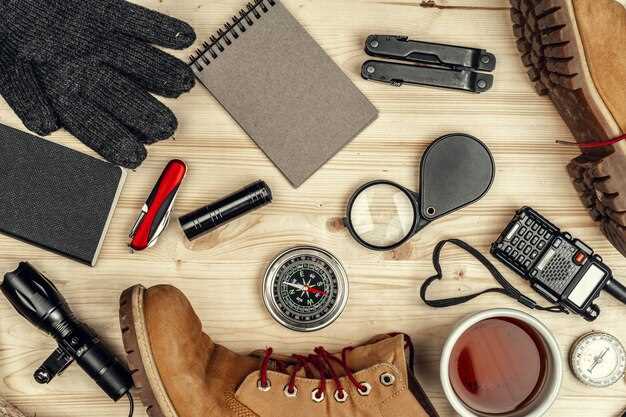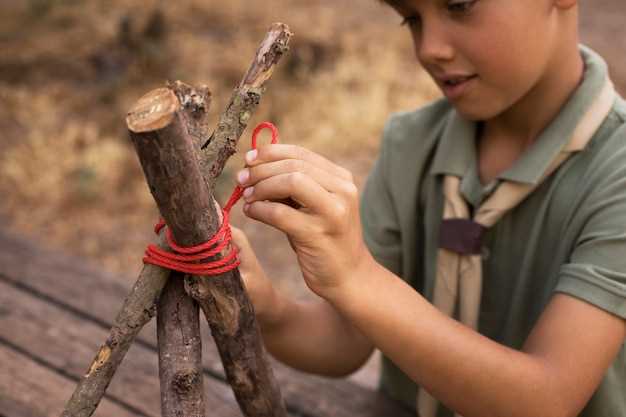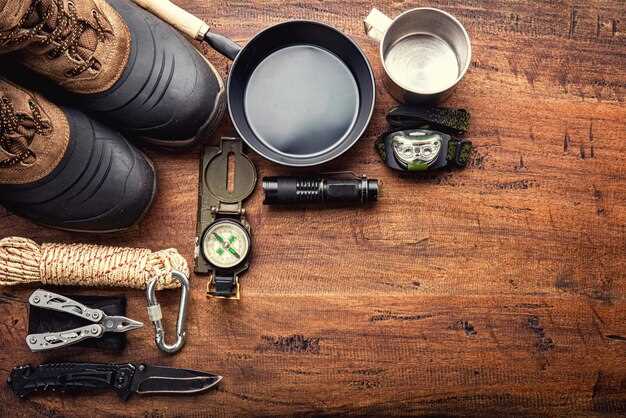
When heading into the great outdoors, preparing a well-thought-out survival kit is essential for ensuring safety and comfort during unexpected situations. A basic survival kit should include key gear that allows you to navigate challenges effectively, especially in remote locations. Understanding the must-haves of your kit can make all the difference when faced with adverse conditions.
In an outdoor adventure, survival often hinges on having the right equipment at your disposal. This kit should be compact yet comprehensive, providing tools that are versatile and dependable. Whether you’re embarking on a hiking trip, camping expedition, or simply enjoying nature, knowing what items to include will prepare you for anything nature throws your way.
From navigation aids to first aid supplies, every piece of gear plays a pivotal role in your safety. Familiarizing yourself with essential components can help you build a sturdy foundation for a survival kit that meets your needs and enhances your outdoor experience. As we delve into the details of each item, you’ll gain insights into how these must-haves can be crucial for your adventures.
Choosing the Right Backpack for Carrying Survival Gear
When planning outdoor adventures, selecting the right backpack for carrying survival gear is crucial. The right backpack not only affects comfort and mobility but also impacts accessibility and organization of essential items.
First, consider the capacity of the backpack. Depending on the duration of your trip, you may need a daypack for short excursions or a larger, multi-day pack for extended adventures. A general guideline is to choose a 20-30 liter pack for day trips and 50-70 liters for longer ventures. This ensures adequate space for all necessary survival gear while maintaining a manageable weight.
Durability is another key factor. Opt for materials that can withstand harsh outdoor conditions, such as water-resistant nylon or other rugged fabrics. Reinforced stitching and strong zippers also contribute to the longevity of the backpack, ensuring your survival gear remains protected from the elements.
Comfort and fit are paramount. Look for features like padded shoulder straps, a ventilated back panel, and a hip belt for weight distribution. A good fit allows for extended wear without causing discomfort, which is essential when you’re carrying survival gear for long periods.
Additionally, organization is vital. Choose a backpack with multiple compartments and pockets for efficient storage and easy access to your survival gear. Organizational features like elastic side pockets or mesh pouches enable you to keep smaller items readily available, reducing the time spent searching through your pack during emergencies.
Lastly, consider the weight of the backpack itself. A lightweight pack reduces the overall burden, allowing for more gear to be carried without added strain. However, do not compromise on durability for weight savings; find a balance that meets your needs.
In conclusion, selecting the right backpack for carrying survival gear involves careful consideration of capacity, durability, comfort, organization, and weight. A well-chosen backpack can significantly enhance your outdoor experience and preparedness, ensuring you are equipped for any situation you may encounter in the wild.
Must-Have Tools for Emergency Situations
When venturing into the great outdoors, it’s essential to be prepared for unexpected emergencies. Here are some must-haves for your survival kit:
- Multi-tool: A versatile multi-tool combines several tools into one compact device, including a blade, screwdrivers, pliers, and more. This is invaluable for various tasks.
- Fire Starter: Reliable fire-making equipment such as waterproof matches, a lighter, or a fire starter kit ensures you can build a fire for warmth and cooking.
- First Aid Kit: A comprehensive first aid kit should include bandages, antiseptic wipes, pain relievers, and any personal medications to address injuries and health concerns.
- Emergency Blanket: Compact and lightweight, emergency blankets retain body heat and protect against hypothermia in cold conditions.
- Water Filtration System: Having a portable water filter or purification tablets is crucial for ensuring access to safe drinking water in the wilderness.
- Signal Mirror: A signal mirror can help you attract attention for rescue, especially when visibility is low. It’s a lightweight but effective signaling tool.
- Flashlight or Headlamp: A reliable light source is essential for navigation at night or in low-light conditions. Ensure to pack extra batteries.
- rope or Paracord: Durable rope has multiple uses in survival scenarios, from shelter building to securing gear.
- Whistle: A whistle is a lightweight tool that can be heard over long distances, making it a great option for signaling for help.
Equipping yourself with these tools can significantly enhance your preparedness for any emergency situation during outdoor adventures.
Understanding Water Purification Methods in the Wild
When embarking on outdoor adventures, ensuring access to clean drinking water is crucial. Contaminated water can lead to serious health issues. Therefore, understanding water purification methods is essential for any survival kit. Here are several effective techniques for purifying water in the wild, along with the necessary gear and must-haves.
| Method | Description | Required Gear |
|---|---|---|
| Boiling | Heating water to a rolling boil for at least one minute kills most pathogens. | Portable stove or campfire supplies, pot. |
| Filtration | Using a filter to remove contaminants. Different filters target specific pathogens. | Water filter pump, gravity filter, or straw-style filter. |
| Chemical Treatment | Using iodine or chlorine tablets to disinfect water. This method is effective against bacteria and viruses. | Chemical tablets, water container. |
| Solar Disinfection (SODIS) | Exposing clear plastic bottles filled with water to sunlight for several hours to eliminate pathogens. | Clear water bottles, strong sunlight. |
| UV Light Purification | Using UV light devices to kill bacteria and viruses in water quickly. | UV light pen or device. |
Incorporating these methods into your survival kit is a must-have for any adventurer. Each method has its pros and cons, depending on the specific situation and available resources. Carrying a combination of these methods can provide flexibility and ensure access to safe drinking water during your outdoor activities.
Basic First Aid Supplies Every Kit Should Include

When assembling a survival kit for outdoor adventures, incorporating essential first aid supplies is crucial. These must-haves ensure that you are prepared to handle minor injuries and medical emergencies effectively.
First on your list should be adhesive bandages in various sizes. These are essential for covering small cuts and abrasions, preventing infection. Additionally, include sterile gauze pads and adhesive tape. Gauze pads are perfect for larger wounds that require more coverage, while tape secures the gauze in place.
Another critical component is antiseptic wipes or solution. These help in cleaning wounds to reduce the risk of infection. Alongside this, consider including antibiotic ointment to apply on cuts after cleaning, promoting faster healing.
When it comes to pain relief, a supply of over-the-counter medications like ibuprofen or acetaminophen can be invaluable. These can alleviate pain and reduce swelling in case of injuries.
A pair of scissors and tweezers are also essential tools in any first aid kit. Scissors can help cut tape or clothing away from a wound, while tweezers are useful for removing splinters or ticks, which you may encounter during your outdoor activities.
Don’t forget to include a CPR face shield or mask in your kit. This gear is vital if you need to perform CPR on someone, providing a barrier to protect both the rescuer and the victim.
Lastly, a first aid manual or guidebook is an important addition. This resource can help you understand how to treat various injuries and respond appropriately in emergencies. Ensure that your survival kit is equipped with these basic first aid supplies to enhance your preparedness during your outdoor adventures.
Essential Nutrition and Food Supplies for Wilderness Survival
When preparing for outdoor adventures, having the right nutrition and food supplies is crucial for survival. A well-thought-out selection of food can help maintain energy levels and enhance your overall effectiveness in survival situations. The right gear for food preparation and storage is just as important as the food itself.
Non-Perishable Food Items are essential in any survival kit. Consider packing:
- High-Calorie Energy Bars – Compact and packed with nutrients, these bars provide quick energy.
- Dried Fruits and Nuts – Rich in calories and healthy fats, they are excellent for snacking and energy boosts.
- Dehydrated Meals – Lightweight and easy to prepare, these meals only require water to rehydrate.
- Canned Goods – Canned vegetables, meats, and soups offer variety and long shelf life.
Water Purification Methods should not be overlooked. Access to clean water is vital for survival:
- Water Filters – Portable filters can remove contaminants from natural water sources.
- Water Purification Tablets – These tablets are lightweight and effective in killing pathogens.
- Boiling Equipment – Having a portable stove or metal container for boiling water ensures safe drinking water.
Basic Cooking Gear is necessary to prepare and consume your food effectively:
- Portable Stove – Compact and easy to use, a portable stove will allow for cooking meals.
- Cooking Pot – Lightweight and durable pots are perfect for boiling and preparing food.
- Utensils – A simple set of utensils can make meal prep and consumption much easier.
Finally, consider adding Supplemental Nutrition to your kit:
- Protein Powder – Can provide essential protein when food options are limited.
- Vitamins – A daily multivitamin can help make up for missed nutrients.
In sum, carefully selecting non-perishable food items, ensuring access to clean water, and including appropriate cooking gear greatly enhances your chances of survival in the wilderness. A well-rounded supply of nutrition and food gear will keep you energized and prepared for any challenges that arise.
How to Pack Your Survival Kit for Optimal Accessibility

Packing your survival kit correctly is essential for ensuring that your gear is easily accessible when you need it most. Start by choosing a suitable bag or container that allows you to organize your items efficiently. A backpack with multiple compartments can help you categorize and retrieve your gear quickly.
Begin with the most critical survival items, such as emergency blankets, water purification tablets, and first aid kits. These should be placed in easily reachable pockets. Consider using bright-colored bags or compartments for these essentials to enhance visibility and accessibility in low-light conditions.
Next, think about the order of items based on how frequently you’ll need them. Keep food, fire-starting materials, and navigation tools close to the top for immediate access. Items you may need less often, such as extra clothing or tools, can be packed deeper in your kit.
Utilize smaller pouches or containers within your main bag to separate specific categories of gear. For example, use one bag for cooking supplies and another for medical supplies. Label each pouch for quick identification. This method minimizes rummaging through your survival gear during critical moments.
Additionally, practice repacking your kit regularly and make adjustments based on your personal experience in the field. This ensures that you create a system that works best for your specific needs and increases your chances of accessing the right gear fast in an emergency.
Finally, consider the weight distribution in your survival kit. Keeping heavier items close to your back can help maintain balance and comfort when you’re on the move. By strategically organizing and packing your survival kit, you ensure that your essential gear is always at your fingertips when the situation calls for it.

